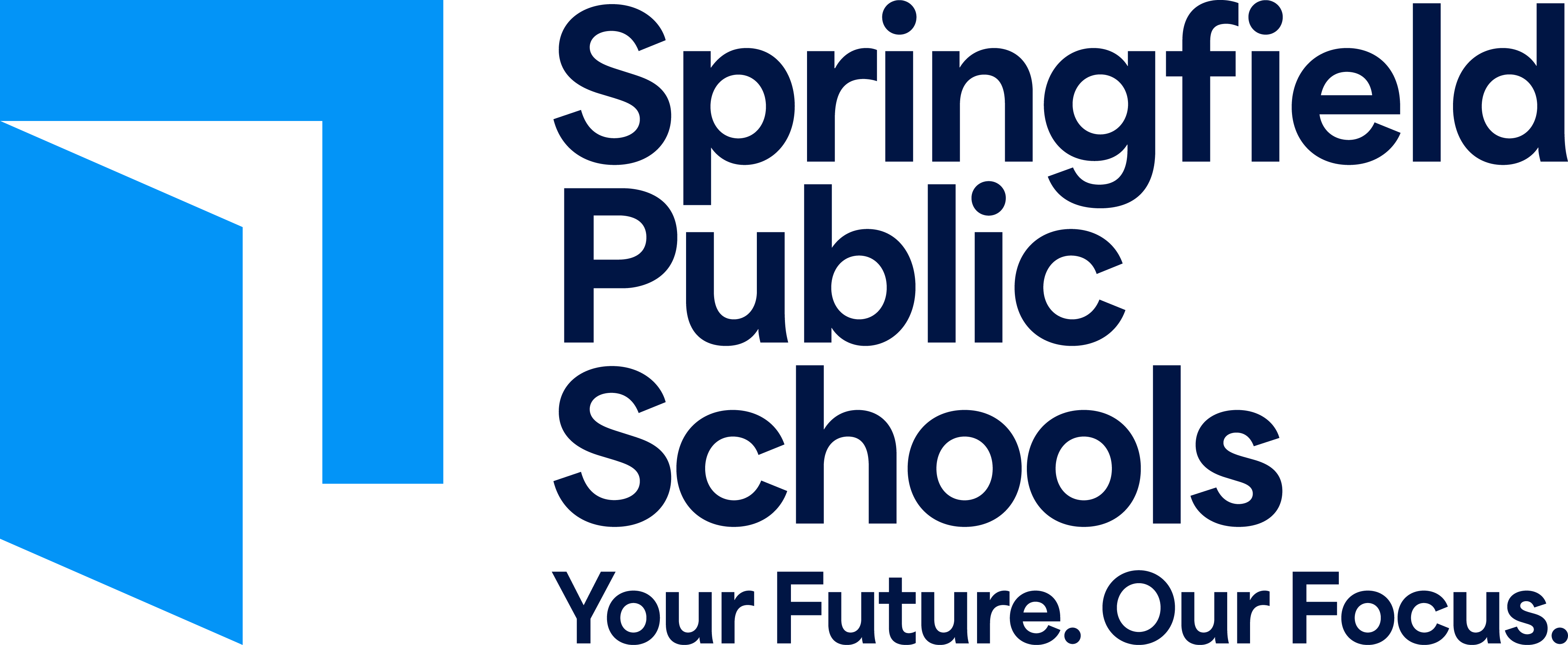Success-Ready Students
-
We are committed to preparing all students to be college and/or career ready, with an emphasis on each student reaching their full potential.
Objective 1.1
-
Demonstrate continuous growth toward mastery in all academic areas
Smart Goal 1.1.1 - Increase the percentage of students meeting proficiency standards on local, state, and national examinations.
Champion: Deputy Superintendent of Academics
Key Metrics: Missouri Assessment Program and End-of-Course Examinations
Baseline: Percent of students proficient or advanced on state assessments during the 2021-2022 school year
Target: Increase of 2% growth over a three-year period
Strategy A: Develop and implement results-driven Building School Improvement Plans (BSIP) annually, with clear targets and implementation strategies that are aligned to the District Strategic Plan.
Strategy B: Monitor classroom implementation of evidence-based instructional strategies for all students as evidenced by site visits, classroom walk-through data, and educator evaluations.
Strategy C: Create, implement, and analyze common formative assessments to increase student proficiency of standards.
Strategy D: Create and implement individual Reading Success Plans to support students who exhibit a substantial reading deficiency district-wide.
Objective 1.2
-
Implement district-adopted curriculum aligned to Missouri Learning Standards
Smart Goal 1.2.1 - Evaluate, adopt, and implement appropriate curriculum in all subjects at all levels.
Champion: Deputy Superintendent of Academics
Key Metrics: Curriculum Development and Implementation Process Rubrics
Baseline: 2022-2023 end-of-year Rubric Data by content area
Target: Improved results on rubric annually
Strategy A: Assess and revise current curriculum processes to include resource selection, development, and implementation to ensure guaranteed and viable curriculum aligned to Missouri Learning Standards.
Strategy B: Develop and implement instructional frameworks to ensure district-wide alignment and access to grade-level and course-specific standards for all students K-12.
Strategy C: Develop a plan to implement digital citizenship curriculum and technology guidelines across content areas.
Objective 1.3
-
Maintain a positive classroom environment conducive to teaching and learning
Smart Goal 1.3.1 - Establish and maintain high academic and behavioral expectations for each student.
Champion: Deputy Superintendent of Academics
Key Metrics: Student Discipline Data, Implementation Rubrics, and Perceptual Survey Data
Baseline: Student Discipline Data, Implementation Rubrics, and Perceptual Survey Data for the 2021-2022 school year
Target: Improved results on rubric annually
Strategy A: Review existing behavior support programming to evaluate level of implementation by site.
Strategy B: Monitor implementation of consistent behavior programming across divisions and sites.
Strategy C: Provide on-going professional learning and support for leaders and teachers regarding consistent implementation of the code of conduct.
Strategy D: Explore and expand opportunities for students needing alternative settings.
Objective 1.4
-
Review programming to ensure equitable access to opportunity for all students
Smart Goal 1.4.1 - Examine processes that remove barriers and provide access in order to maximize educational impact.
Champion: Deputy Superintendent of Academics
Key Metrics: Student feedback surveys, student achievement data, pre-participation vs. postparticipation data, educator survey feedback, number of site mediations
Baseline: End-of-year department data from 2021-2022 will be used to compare future growth and the 2022-2023 school year will be used as a baseline for engagement and academic programs
Target: Increase total number of students (2%) and sites served (+5) by mentoring programs, increase formalized District agreements by one per year, Increase community partnerships to enhance student programming, maintain or increase FY23 student participation rates in the Future Educators Grow Your Own Program, assess current family engagement pilot model and expand programming opportunities
Strategy A: Enhance and expand academic programming for PreK-12 students that improves student achievement and belonging.
Strategy B: Evaluate community partnerships with a focus on enhancing ongoing equity efforts.
Strategy C: Collaborate with the Human Resources Department to ensure SPS is a welcoming and inclusive district that values diversity and utilizes equitable practices for attracting, hiring, and retaining the most qualified staff.
Strategy D: Develop initiatives that promote and increase family engagement while also addressing barriers for students.
Strategy E: Examine current and future programs to identify and minimize barriers to access.
Objective 1.5
-
Provide high-quality professional learning for teachers and staff aligned to evidence-based best practice
Smart Goal 1.5.1 - Develop and monitor professional learning focused on collaboration, effective teaching, and content knowledge.
Champion: Deputy Superintendent of Academics
Key Metrics: Needs Assessment Survey and districtwide Professional Learning feedback
Baseline: Needs Assessment and districtwide Professional Learning Survey data during the 2021-2022 school year
Target: Maintain satisfaction rates at 85% favorable or higher annually
Strategy A: Identify professional learning needs based on teacher and student data.
Strategy B: Review and modify current professional learning systems and support to enhance efficiencies and alignment.
Strategy C: Monitor application and impact of professional learning on classroom instruction.
Strategy D: Establish and align collaborative teams schoolwide and districtwide.
Objective 1.6
-
Enhance real-world educational opportunities for all students
Smart Goal 1.6.1 - Create and/or maintain well-rounded educational experiences for students and educators by partnering with business, industry, postsecondary institutions, and other entities.
Champion: Chief Strategy and Innovation Officer
Key Metrics: Number of student Career and Technical concentrators, Industry Recognized Credentials earned, Career and Technical Student Organizations student participation rates, number of Career and Technical Certificates earned, Choice magnet schools’ satisfaction rates and student achievement data
Baseline: 2022-2023 end-of-year student data
Target: Increase identified Career and Technical Education metrics by 2%-5% over a five-year period, maintain Choice magnet schools’ satisfaction rates at 90% favorable or more annually. Choice magnet schools’ student achievement data meets or exceeds district achievement data annually
Strategy A: Evaluate and align current Career and Technical Education programming in order to provide recommendations for improved vertical alignment and program expansion or reduction to meet workforce needs and student interest.
Strategy B: Establish a work team to evaluate all district career education programming in order to provide recommendations for improved departmental alignment and/or restructuring.
Strategy C: Implement a quality assurance endorsement process for Choice programs to measure program effectiveness and ensure continuous improvement. Programs will be placed on three-year evaluation cycles. Results will be published on the district’s Choice programs web page.


